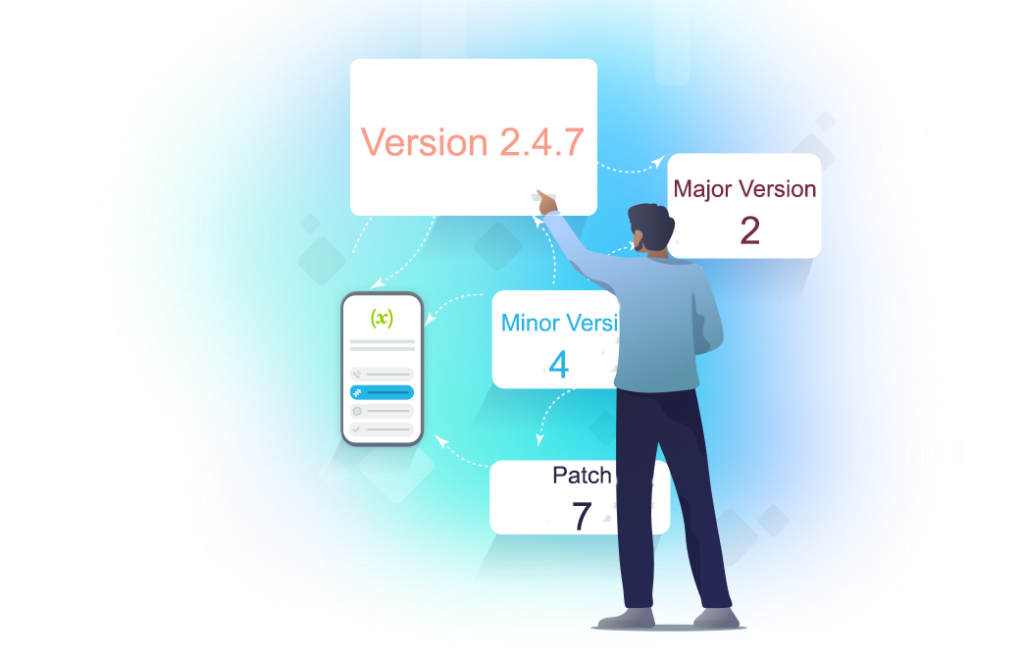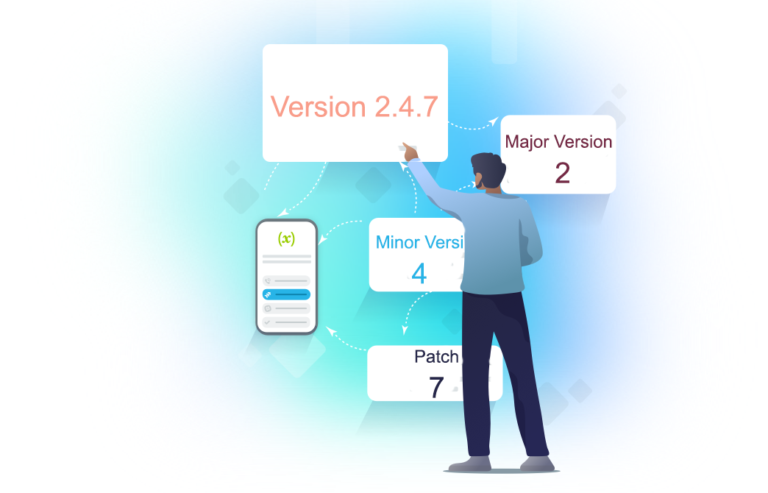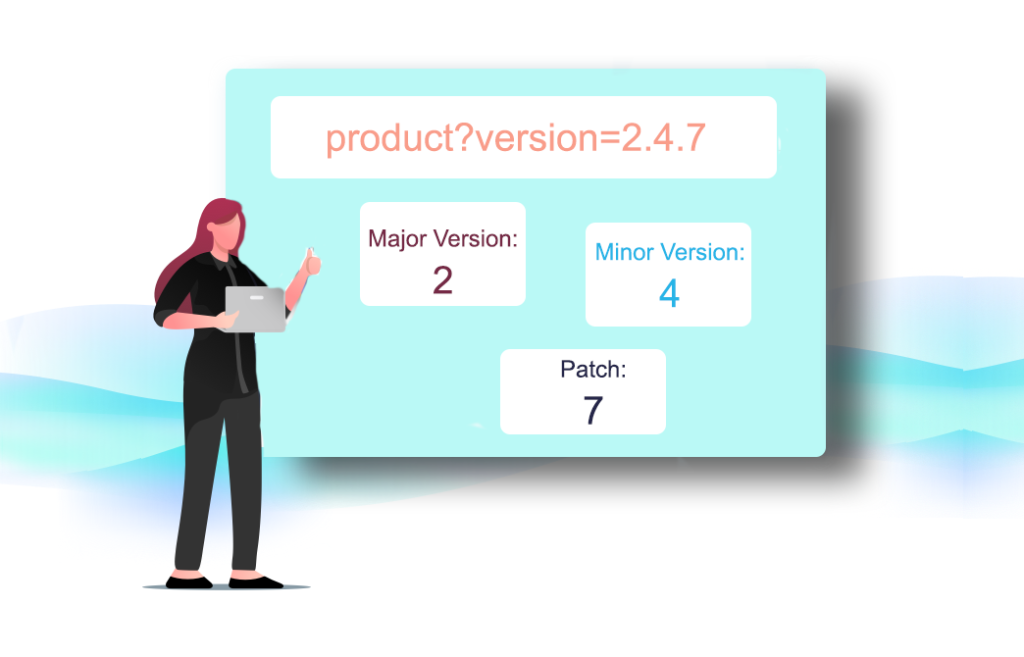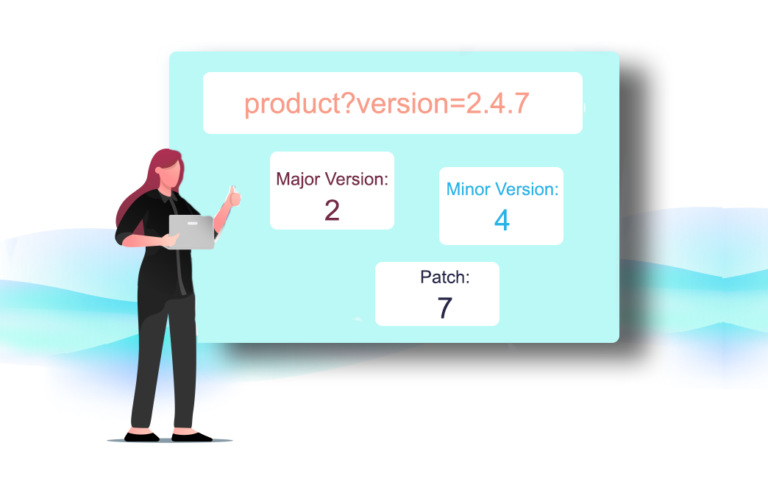API Versioning: Strategies & Best Practices
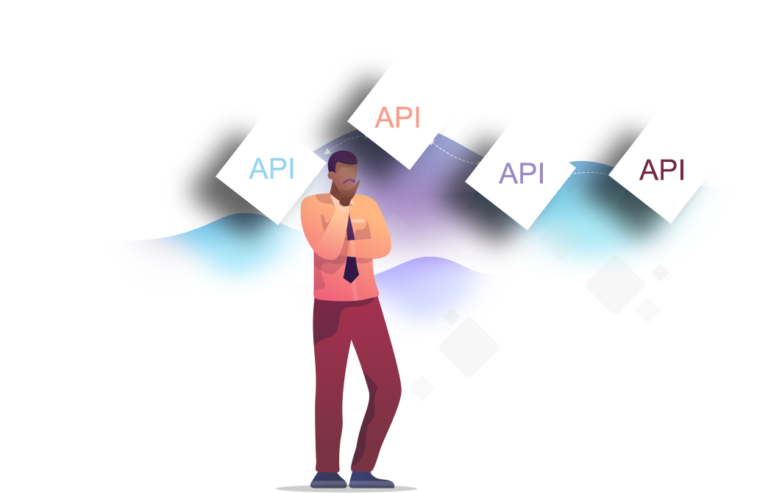
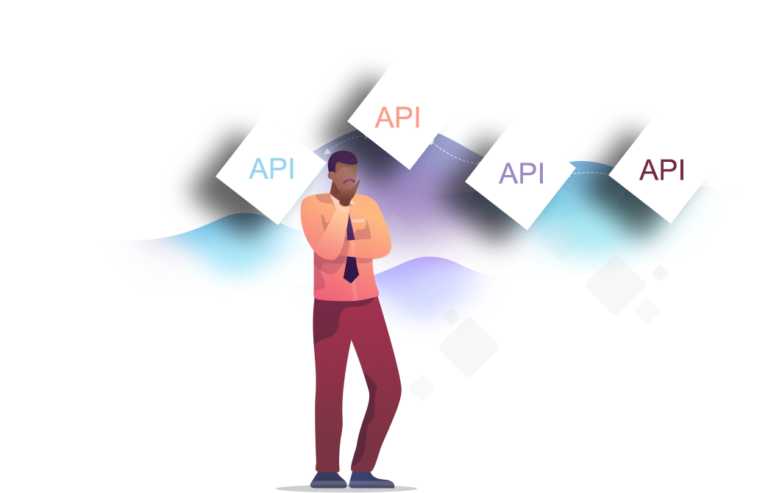
A key challenge in the software ecosystem is managing changes, especially the evolution of APIs. Because you’re likely using APIs in multiple applications, you must document all updates and changes made to your APIs. This is where API versioning becomes crucial.
API versioning is a system of managing API changes so that these changes don’t negatively affect internal and external consumers and clients. Versioning defines a clear strategy for managing changes and reflecting them in your API structure.
API versioning is especially important when it comes to breaking changes. You don’t want to break existing applications when you make changes to your API. Therefore, you need to communicate any potential breaking changes when you up-version.
If you push changes without notifying your API consumers, parts of their applications could malfunction or fail. Even a minor change like adding a new field to an API response could cause an issue for consumers who store cached versions of API responses. A new response format can confuse their tooling.
It’s one thing to be familiar with API versioning, but it’s another to implement. This article discusses how API versioning works and highlights its importance for API developers and consumers, exploring five strategies and best practices for using API versioning.
5 API Versioning Best Practices
To ensure API stability, you need to ensure your API contract stays intact. To do so, follow these five API versioning best practices.
1. Enforce Backward Compatibility
When working with APIs, it’s important to enforce backward compatibility
API consumers lose business revenue every time they have to upgrade their application to comply with a new API contract. Too many breaking changes in a short period will likely prompt your API consumers to begin looking for a more stable API.
Backward compatibility ensures that the API continues to work the same way with consumers’ applications, regardless of the changes that occur. You can easily ensure backward compatibility by introducing unit tests to verify that functionality remains across different versions of your API. Specifically, you want to verify that API endpoints return the same response schemas and accept the same request schemas. Ideally, you want to implement continuous integration that runs for each change against your API. This practice automates the validation of backward compatibility. If a unit test fails, your continuous integration pipeline can warn you to avoid releasing the update.
By implementing backward compatibility, an API producer can offer a more stable API and reduce communication about API changes to consumers. Moreover, this practice reduces the number of documentation changes and versions needed to reflect API changes.
2. Document All API Versions and Publish Changelogs
Be sure to support all API versions with documentation. Some companies only provide documentation for the latest API version, meaning that clients consuming older API versions cannot find relevant information.
A changelog that describes all changes in each new API release is one of the most important reference documents for API consumers. It allows them to verify that changes won’t negatively affect their application, so they can decide whether they want to update.
The ability to quickly update API consumers about new releases is vital, so it’s a good idea to provide a variety of ways to subscribe to changelog updates, like via an RSS feed and through email updates. This ensures that API consumers can change their applications to reflect API changes.
3. Avoid Changing Endpoints or Response Formats
To minimize the risk of breaking features, add new endpoints instead of changing existing ones. Additionally, you should add new properties to the response format instead of changing existing properties.
Assume, for example, that you have an API endpoint that returns information about individual people. Currently, each person can have just one phone number. However, perhaps due to changing business requirements or customer feedback, you now want to support multiple phone numbers for each person. Instead of changing the phone field to an array, you add a new property: phones. This ensures backward compatibility and allows you to change the functionality of your API.
Likewise, you don’t want to remove support for old API endpoints. Instead, add new API endpoints that support the updated business requirements.
By following this strategy, you can ensure backward compatibility for API endpoints and avoid breaking client applications.
4. Opt for Versioning Through the URI Path
There are many API versioning strategies. One of the best ways is to include the API version in the URI path. Many large companies like Facebook, Twitter, and Airbnb have adopted this strategy.
This type of URI routing enables clients to use a specific version of your API. It’s a straightforward way of telling an application which version it’s consuming. You can also host multiple versions of your API, allowing consumers to choose which version they want to use. Furthermore, this approach enables easy resource caching.
5. Publish an Up-to-Date Release Schedule
A release schedule lets you inform API consumers of upcoming changes and new API versions. When you decide to deprecate or remove support for an older version, your API consumers have ample time to refactor their applications. Install monitoring to measure how many applications are consuming each API version. You don’t want to pull support before your users have migrated to the new version. This is an important aspect of being a quality API provider.
In short, an up-to-date release schedule allows API consumers to anticipate upcoming API changes. Instead of having to take down their application for maintenance, they can continue operating with minimal downtime, mitigating any loss of business revenue. Furthermore, a release schedule allows API consumers to clearly communicate their future plans and prepare for upcoming API changes.
Four REST API Versioning Strategies
A versioning strategy allows clients to continue using the existing REST API and migrate their applications to the newer API when they are ready.
There are four common ways to version a REST API.
1. Versioning through URI Path
http://www.example.com/api/1/products
One way to version a REST API is to include the version number in the URI path.
xMatters uses this strategy, and so do DevOps teams at Facebook, Twitter, Airbnb, and many more.
The internal version of the API uses the 1.2.3 format, so it looks as follows:
MAJOR.MINOR.PATCH
- Major version: The version used in the URI and denotes breaking changes to the API. Internally, a new major version implies creating a new API and the version number is used to route to the correct host.
- Minor and Patch versions: These are transparent to the client and used internally for backward-compatible updates. They are usually communicated in change logs to inform clients about a new functionality or a bug fix.
This solution often uses URI routing to point to a specific version of the API. Because cache keys (in this situation URIs) are changed by version, clients can easily cache resources. When a new version of the REST API is released, it is perceived as a new entry in the cache.
- Pros: Clients can cache resources easily
- Cons: This solution has a pretty big footprint in the code base as introducing breaking changes implies branching the entire API
2. Versioning through query parameters
http://www.example.com/api/products?version=1
Another option for versioning a REST API is to include the version number as a query parameter.
This is a straightforward way of versioning an API from an implementation point of view.
- Pros: It’s a straightforward way to version an API, and it’s easy to default to the latest version
- Cons: Query parameters are more difficult to use for routing requests to the proper API version
3. Versioning through custom headers
curl -H “Accepts-version: 1.0”
http://www.example.com/api/products
REST APIs can also be versioned by providing custom headers with the version number included as an attribute.The main difference between this approach and the two previous ones is that it doesn’t clutter the URI with versioning information.
- Pros: It doesn’t clutter the URI with versioning information
- Cons: It requires custom headers
4. Versioning through content negotiation
curl -H “Accept: application/vnd.xm.device+json; version=1” http://www.example.com/api/products
The last strategy we are addressing is versioning through content negotiation.
This approach allows us to version a single resource representation instead of versioning the entire API which gives us a more granular control over versioning. It also creates a smaller footprint in the code base as we don’t have to fork the entire application when creating a new version. Another advantage of this approach is that it doesn’t require implementing URI routing rules introduced by versioning through the URI path.
One of the drawbacks of this approach is that it is less accessible than URI-versioned APIs: Requiring HTTP headers with media types makes it more difficult to test and explore the API using a browser.
- Pros: It allows us to version a single resource representation instead of versioning the entire API, which gives us a more granular control over versioning. Creates a smaller footprint. Doesn’t require implementing URI routing rules.
- Cons: Requiring HTTP headers with media types makes it more difficult to test and explore the API using a browser
How To Implement API Versioning
There are essential steps to implementing API versioning:
Planning and Strategy Selection
- Start versioning early in the API design phase.
- Choose an appropriate versioning strategy based on your API’s audience, update frequency, and complexity.
- Consider using semantic versioning (MAJOR.MINOR.PATCH) for clear communication of changes.
Managing Changes
- Maintain backward compatibility whenever possible.
- Implement a clear deprecation policy for older versions.
- Use API gateways to centralize version management and routing.
Documentation and Communication
- Update API documentation to reflect changes in new versions.
- Provide comprehensive change logs and migration guides.
- Communicate upcoming changes well in advance to users.
Deployment and Transition
- Gradually deploy new versions, allowing users to transition at their own pace.
- Gather feedback and identify issues before a broader rollout.
- Support multiple versions simultaneously during transition periods.
- Use version-specific URLs for non-serving application versions.
Monitoring and Support
- Monitor adoption rates of new versions before deprecating old ones.
- Offer support during the transition phase to help clients troubleshoot issues.
- Conduct thorough testing, including unit, integration, and regression tests for each new version.
Automation and Security
- Implement automated security checks and vulnerability assessments.
- Use CI/CD pipelines to ensure consistent and reliable deployment of new versions considering APIs impact on DevOps.
By following these steps, API developers can effectively manage the versioning process, ensure smooth transitions between versions, and maintain a stable and reliable API ecosystem for their users.
Tools and Libraries For API Versioning
The top API versioning tools are:
- OpenAPI: Provides a standardized way to define APIs, including versioning. It offers documentation generation and tools for creating client and server code.
- Postman: A comprehensive API development environment with features for API version control, tagging, and documentation.
- Apigee: Google Cloud’s robust API management platform offering versioning capabilities, traffic management, and comprehensive analytics.
- AWS API Gateway: Offers tools for creating, deploying, and managing API versions, with stage management and version-specific endpoint creation.
- Azure API Management: Microsoft’s service for managing multiple API versions, offering versioning, revisions, and version-specific policies.
- Kong: An open-source API gateway and management platform with strong support for versioning, custom plugins, and real-time analytics.
To integrate API versioning into a team’s tech stack, you need to choose a versioning strategy by selecting from URI path, query parameter, custom header, and content negotiation versioning.
Then, you need to implement the versioning in code and automate the deployment of different API versions. You can use tools like Swagger or Postman to generate and maintain version-specific API documentation and implement version-specific monitoring and analytics to track usage and performance across different API versions.
Mastering API Versioning for Stability and Growth
Versioning is a crucial part of API design. It gives developers the ability to improve their API without breaking the client’s applications when new updates are rolled out.
An API contract enables API providers to clearly communicate with consumers about their interface. To strengthen communication, publish changelogs and offer documentation for each API version. Make sure to provide simple ways for API consumers to subscribe to these updates to ensure all your consumers can easily receive these updates. By versioning your API via the URI path, you offer an explicit way of API versioning, which makes it easy for API consumers to switch between API versions.
API versioning is an essential aspect of offering a reliable, stable, high-quality API. While breaking changes can and sometimes must be introduced, it’s best to limit them and enforce backward compatibility where possible. When companies have to deal with many breaking changes, they’re likely to look for more stable alternatives with lower maintenance costs.
At xMatters, we follow the SemVer specification – we update the API major version whenever we introduce breaking changes. Internally, we update minor and patch versions whenever we add functionality and backward-compatible updates.
Want to see xMatters in action? Request a free demo or sign up for a trial today to discover how we can transform your incident management processes.
FAQs Related To API Versioning
How do you decide when to create a new version of an API?
You decide to create a new version of an API when there are significant changes in functionality, breaking changes that would impact existing users, or when you introduce new features that require a clean separation from the previous version to maintain backward compatibility.
What are the best practices for managing deprecated API versions?
Best practices for managing deprecated API versions include giving a lot notice to users before deprecation, offering clear migration guides and support, implementing gradual deprecation policies with a clear timeline, maintaining backward compatibility when possible, and using API gateways to centralize version management and routing

